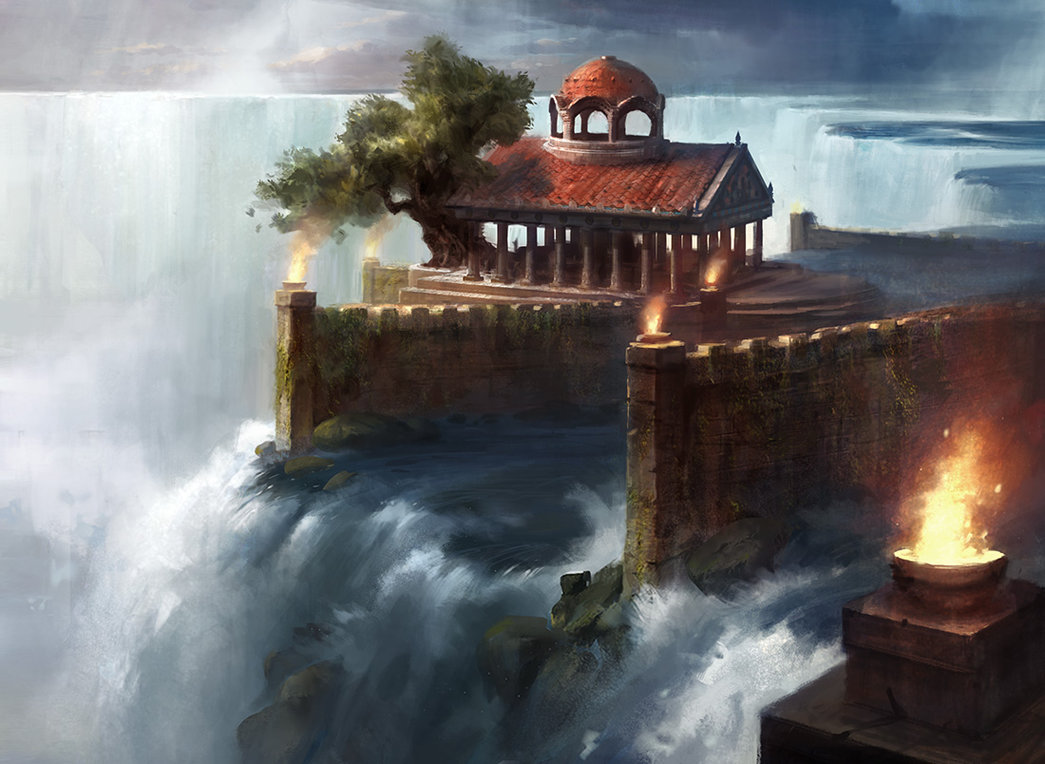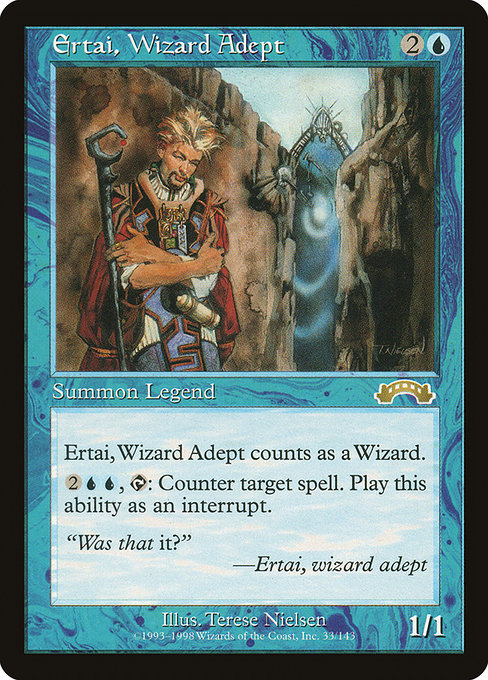Are you a Quiet Speculation member?
If not, now is a perfect time to join up! Our powerful tools, breaking-news analysis, and exclusive Discord channel will make sure you stay up to date and ahead of the curve.
Welcome back, readers!
As speculators we are often focused on what's ahead in the Magic finance realm—after all, that's where the gains and losses will occur. However, as the old adage goes, "those who don't know history are destined to repeat it." A critical part of any speculator's job is to evaluate their past specs. This is particularly important for the failed ones.
So with that in mind, let's look at some of my bigger specs from the last few years that didn't pan out. For each of these I purchased multiple copies at retail prices, in the expectation that they would go up. Some were a bigger flop than others, but each has valuable lessons to impart.
Dictate of Erebos
I purchased 62 copies of Dictate of Erebos, at an average price of $1.7, on April 26th and April 27th 2014 (so a little over three years ago). I wrote about this spec here. For those who don't want to read the whole article, the relevant bits about this spec (at the time) were:
1. It's black. Currently, black is one of the most powerful colors in Standard right now. It can fit into a mono-black build and provide two devotion.
2. It's an enchantment. This means it's difficult to get rid of (maindeck) for many other decks.
3. It's a new Grave Pact. Many people don't remember the last time Grave Pact was Standard-legal but it makes a lot of kill spells into 1-for-2's, which is terrible for the opponent. It also plays really well with instant-speed sacrifice affects. Just as important; Grave Pact is currently a $9 card despite being reprinted six times. The triple-black of Grave Pact may be good for some EDH decks (ones that are mono-black or focus on devotion), but the slightly easier mana cost (2 black and 3 colorless) for Dictate might make it easier to play than Grave Pact.
4. It has flash. This allows people to flash it in in response to kill spells or what looks like "bad" attack math.
Now obviously the Standard applications (i.e. when Mono-Black Devotion was king) aren't really relevant anymore, however the last three bullet points are (especially the third one). If we look at the card's price now we might say that I made a great pick and move on, but it's not that simple.
I bought into the card at $1.70 thinking it would see play in Standard. It did not. If we look at the price curve carefully, we'll see that I purchased it before it started to plummet. Between the months of November 2014 all the way through April 2015, it was under $0.75.
Lesson Learned
Jumping the gun can cost you a lot of money when it comes to trying to pick out eternal targets. One can argue that because this spec was for both Standard and Eternal it made sense to buy in early (as any Standard play might have caused the value to triple up or more). However, had I waited, I could have saved almost 62 dollars and would have had a much healthier profit margin.
To make matters worse, after having spent $1.70 per copy and seeing it drop to under $0.75, I shied away from going any deeper. At the time, I believed that I might have over-extended and was concerned with being able to out a large number of copies, as that typically requires buylisting them.
The current buylist price is $2 and there is no quantity limit. So had I not backed off and gone deeper, I could have easily made 200% or more in profit on any copies purchased in that six-month window. As of right now I would only make a modest 18% profit (minus shipping costs) on the copies I do have. Given the spread is currently around 43% (and I prefer 35% or lower when I buylist), I will hang on to the copies I still have.
Ertai, Wizard Adept
January 29-30th of 2015 I decided to speculate on Ertai, Wizard Adept as a potential Reserved List spec as well as a Tiny Leaders card. I purchased 29 copies (ranging from HP-NM) at an average cost of $4.35. I wrote about it here. My reasoning at the time:
"Ertai has quite a few things going for him. He's mono-colored and a legend which means he can both be a general and can fit in the largest number of decks. He is a Wizard which is a tribe that has a lot of options and support throughout Magic's history. His ability is quite powerful, he's blue, and most importantly, he's on the Reserved List, so as long as that stands there won't be any more of him printed."
Since then the price has remained virtually the same.
Lesson Learned
This one can carry a few lessons. One, I speculated on a new format (Tiny Leaders) and it didn't pan out. There was some excitement about it initially—I built two different decks myself, and we had a few players locally who were always happy to play. However, it didn't stick, and since then all the players around here have taken apart their decks and moved on. I learned from this particular lesson and avoided speculating on the Frontier format for fear of getting burned again.
Another lesson I learned is that a card may have a lot going for it, but it's very easy to get tunnel vision regarding a speculation target. Looking over my reasoning I only focused on the positives and failed to take into account the negatives. For example, without outside help Ertai's ability can only be used once per turn, and it's relatively expensive too. I also may have had a bit of hubris and thought that I had indeed found the next big Reserved List target.
It's important to remember with any old cards is that their current price is set by an open market, and the older the card is the longer the market has had to adjust if there was any strong demand increases. Now that isn't to say we won't see sudden jumps in demand (as that's where a lot of us make our money when it comes to speculating), but a price spike needs a catalyst. Sometimes it's one person trying to corner a market, and sometimes it's real demand from the multitudes. But if you get focused on all the positives you may bypass that and assume a catalyst is on its way when it's not.
Moving forward I tend to prefer to speculate on older EDH cards that play well with newer commanders. The reason is that so far I've seen a lull in between some new hot commander's spoiling and when we see cards that play well with it spike. During this lull one can buy up the best opportunities relatively cheap, though it's important to note that we are likely to see this lull shorten as more speculators enter the marketplace.
As a fun aside, my real winning spec from that particular article was my call on Engineered Explosives as it was sitting right around $7.50 at the time.
Temple of Mystery
In December of 2013 I went on a bit of a buying spree on Theros block temples (with emphasis on the ones from the Theros set because they were cheapest). I had done really well buying into both the Scars block fast lands (Darkslick Shores) and the Innistrad check lands (Clifftop Retreat).
I simply followed the same pattern and bought into the rare mana-fixing lands of Standard that were cheap right before the next block hit. At that time Theros block drafts would greatly diminish in number, and demand for its lands would increase. I decided to go a lot bigger than I had previously, so I stockpiled a ton of these temples and waited and waited.
Then we started nearing rotation and they still hadn't moved, but selling out then would have been at a pretty big loss. I stood my ground and hoped for one last price bump that never came. I still have a ton of these temples sitting in a binder together.
Lesson Learned
There are two good lessons from this one. Just because we notice a pattern doesn't mean it's guaranteed to repeat. It's not that difficult to find patterns when you really look (which is how ridiculous conspiracy theories get started). What is difficult is figuring out if the pattern is legitimate or not.
In this case the pattern was legitimate, but it had ended. The Magic playerbase had been growing by leaps and bounds in recent years, but seemed to have plateaued with Theros. This is an issue because while there was a lot of player demand there was likely a lot more product opened which allowed for demand to be met and prices to remain stagnant.
The other lesson to learn is that letting your pride dictate whether you sell a losing position is a great way to lose a lot of money. The temples are worth even less now than they were when I looked sadly at my giant stack and realized they weren't going to go up anymore.
Conclusion
So there are some of my bigger specs and the lessons I learned from each. I hope by sharing them with you all, you may avoid making the same mistakes I did. I feel like this is a subject we don't touch upon a lot because as humans we tend to avoid the negatives and focus solely on the positives, but the smartest people are the ones who learn from their mistakes.
Any speculation mistakes you want to share? Please feel free to do so in the comments (hopefully along with any lessons you learned along the way).








This was a great article and a great idea for an article
Good work man
Thanks. I always appreciate feedback (positive or negative) and I do think it’s always important to look back on our decisions (good or bad) and try to learn from them.
I really like this article idea. Nice work!